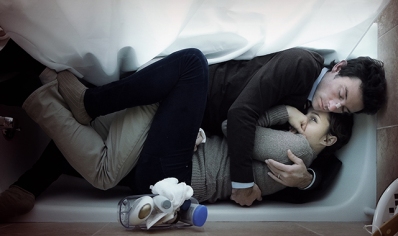 |
| Not as comfortable as it looks |
Shane Carruth is puzzle box maker. In his prior film, Primer, the Texan writer/director/actor demonstrated that he excels at constructing elaborate machines of whirling logic while still maintaining a realistic veneer. His next venture, Upstream Color, abandons some of the constraints of realism but Carruth’s iron grip remains on the wheel. Perhaps in a course correction from the jargon heavy Primer and the failed creature feature he attempted in the interim, Upstream Color is a decidedly more quiet and personal film. The film begins with an incredibly tense setup that will squirm its way under your skin, but then relaxes into a surprisingly naturalistic mood. Upstream Color is a remarkably deliberate trip through a range of severe emotions, effectively evoked in a tactile way.
Unlike Primer, this time plotting and exposition is less rigorous. Ambiguity amplifies the effect of the wandering shots and soft focus musing. Briefly, Amy Seimetz plays a woman caught adrift after a horrific encounter. By chance meeting, she finds herself drawn to Shane Carruth’s down to earth office worker. Or, better to say, they find themselves drawn to each other despite an initial lack of chemistry. As their relationship grows they find that they are connected to each other in ways they can’t understand. The almost whispered dialogue and numerous nature shots recall 2011’s ethereal ‘Tree of Life’, but unlike that movie the mystery of the main couple’s relationship is explicitly defined by Carruth. Transcending Malick’s somnambulant glide, Upstream Color builds a complex science fiction premise and then, like all good sci-fi, asks what happens to the people in that situation and how it relates to the audience.
 |
| This is why I try to stay away from public pools |
Carruth again proves himself a capable director, creatively framing shots and his actors (sapien and porcine). Upstream Color, an appropriate title, uses striking colors as a weapon. Blue and yellow flowers plant major revelations. Dark and light are used outside their normal typecast roles (“my head is made from the same material as the sun”), and the clean city and busy natural landscapes are constantly juxtaposed. These contrasts are not just for splendor, as the ambiguous nature of Shane and Amy’s relationship is about the connections between things that don’t seem connected, and how that subterranean logic changes the way we as humans act and even who we are. It’s an easy idea to verbalize, but Upstream Color makes you feel it, with clear wordless actions like the sliding of a rock down a sheet of metal. Though simple, it’s a deliberate part of the puzzle clicking into place. If anything, perhaps Upstream Color’s flaw would be that Shane Carruth seems incapable of releasing control and allowing the film to become completely lyrical, as every inch of the film contains his intent and loses some worldliness for it. That being said, it may not have been possible for a less explicit director to helm such a complex yet subtle film.
 |
| Shane tries to explain Primer to Amy |
Upstream Color is an excellent demonstration of the promise of mature indie filmmaking; an uncompromised vision that conjures unique feelings in the audience. Indeed, Upstream Color is one of the most unique films in years. Many films squander their premises, but here Carruth has not wasted a single drop. To combine an explicit narrative with dreamy philosophy is a rare feat of cinema alchemy. Provided you’re up for an intellectual challenge, Shane Carruth has created a rich experience that you will connect with in unexpected ways.
4/4
**Originally Published on Synthetic Error July 25, 2013
Comments
Post a Comment